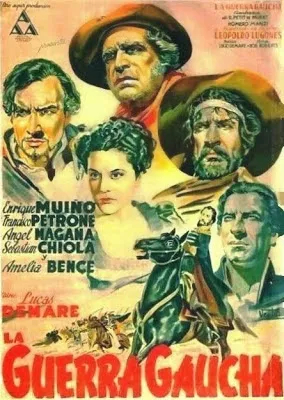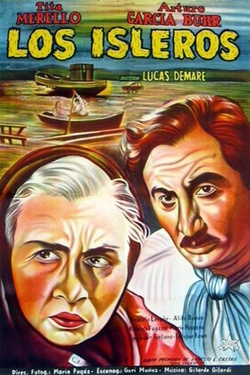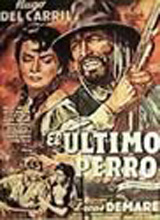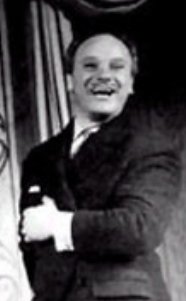
Homero Nicolás Manzione Prestera, better known as Homero Manzi was an Argentine tango lyricist, author of various famous tangos. He was also a filmmaker, notable for his work during the classical era of Argentine cinema.

The cinema of Paraguay has historically been small. However, this has begun to change in recent years with films like El Toque del Oboe (1998); María Escobar (2002); O Amigo Dunor (2005), which competed for Best Movie in the Rotterdam International Film Festival; Hamaca Paraguaya (2006), which was screened at the Cannes Film Festival, gaining critical acclaim both in Paraguay and abroad; 7 cajas (2012); Latas Vacías (2014); and Luna de Cigarras (2014).
Leopoldo Torres Ríos was an Argentine film director and screenwriter notable for his work during the Golden Age of Argentine cinema. His brother Carlos Torres Ríos was a notable cinematographer. His son was the film director and screenwriter Leopoldo Torre Nilsson.

Mario Soffici was an Italian-born Argentine film director, actor and screenwriter notable for his work during the Golden Age of Argentine cinema.

The Gaucho War is a 1942 Argentine historical drama and epic film directed by Lucas Demare and starring Enrique Muiño, Francisco Petrone, Ángel Magaña, and Amelia Bence. It is one of the most celebrated works of the Golden Age of Argentine cinema. The film's script, written by Homero Manzi and Ulyses Petit de Murat, is based on the novel by Leopoldo Lugones published in 1905. The film premiered in Buenos Aires on November 20, 1942 and is considered by critics of Argentine cinema to be one of the most successful films in history.

Los isleros is a 1951 Argentine film directed by Lucas Demare, during the classical era of Argentine cinema. It was entered into the 1951 Cannes Film Festival. It won the Silver Condor Award for Best Film.

Lucas Demare was an Argentine film director, screenwriter, and film producer notable for his work during the classical era of Argentine cinema and beyond.

María Aurelia Bisutti was an Argentine film and TV actress, with over 50 Argentine cinema and television credits between 1948 and 1993, as well as numerous roles in the theatre.

Jorge Salcedo was a popular Argentine actor of radio, television and feature films, who appeared in film between 1941 and 1980, including the Golden Age of Argentine cinema.

El Último perro is a 1956 Argentine film directed by Lucas Demare. It was entered into the 1956 Cannes Film Festival.

Marcos Zucker was an Argentine actor and comedian, known for his work on stage, on television, and in films, he is best known for his comedic roles and appeared in 66 films.
Alberto Terrones was an Argentine film and theater actor, with an extensive filmography.
The 1943 Argentine Film Critics Association Awards ceremony was held in Buenos Aires on 10 January 1943 to honour the best films and contributors to Argentine cinema in 1942. This was the first time the awards had been presented.

Domingo Márquez was an Argentine actor. He starred in films like The Best Father in the World (1941), Los martes, orquídeas (1941), Filomena Marturano (1950), and The Fire Girl (1952). He had a minor role in the acclaimed Silver Condor-winning 1943 film Juvenilia.
Ralph Pappier was an Argentine production designer, set decorator and film director.
The 1945 Argentine Film Critics Association Awards ceremony was held in Buenos Aires on 4 January 1945 to honour the best films and contributors to Argentine cinema in 1944.

Estudios San Miguel was an Argentine film studio that was active in the 1940s and early 1950s. It flourished during the Golden Age of Argentine cinema, and at its peak was one of the major studios in Buenos Aires. Genres ranged from musical comedy to costume drama and gaucho thriller. Films included La guerra gaucha, co-produced with Artistas Argentinos Asociados, and the comedy Juvenilia (1943), both of which won several major awards. Eva Duarte, soon to become the first lady of Argentina as Eva Perón, appeared in two of the studio's films in 1945. The studio became overextended financially and ceased production after 1952.
Thirst aka Hijo de Hombre, aka Choferes del Chaco is a 1960 Argentine-Spanish war film directed by Lucas Demare. It is set during the Chaco War (1932–35) between Bolivia and Paraguay, sometimes known as the "War of the Thirst". The script is based on a chapter of Augusto Roa Bastos novel Hijo de Hombre. It was made as a co-production between Argentina Sono Film and the Spanish company Suevia Films.
The Seducer of Granada is a 1953 Argentine-Spanish comedy film directed by Lucas Demare and starring Luis Sandrini and Malvina Pastorino.

Fanny Navarro was an Argentine actress. She starred in films such as Melodías porteñas (1937), Doce mujeres (1939), Ambición (1939), El hijo del barrio (1940), Hogar, dulce hogar (1941), Dos ángeles y un pecador (1945), Marihuana (1950), Deshonra (1952), Marta Ferrari (1956) and La Calesita (1969). Navarro was the girlfriend of Eva Perón's brother, and she was selected by Perón to head the Peronist foundation for actresses. Navarro once lost the only copy of a script written for Leopoldo Marechal's play Antigona Verez; Marechal was ordered to rewrite the entire thing.












